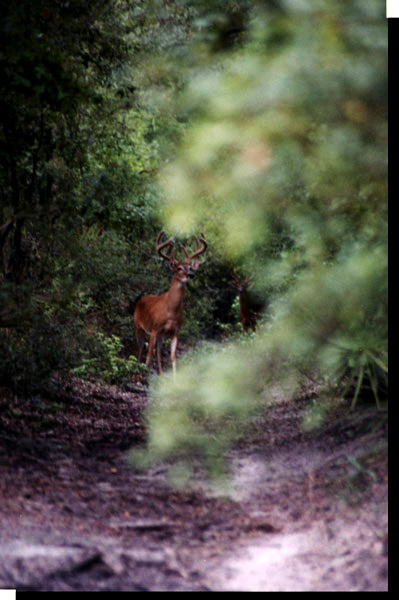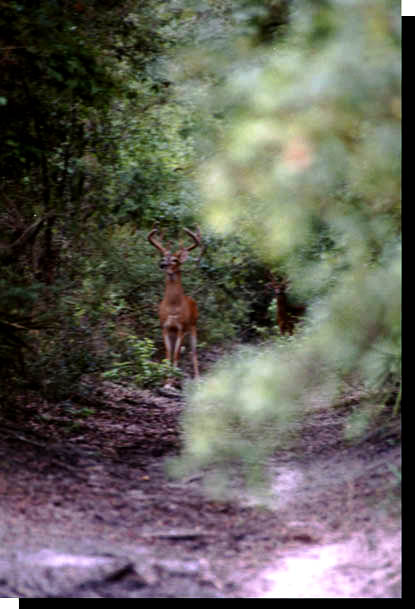

 |

|
| This wary buck is winding something. Deer are dedicated to their survival, but can be foiled by their intense curiosity, and in trying to satisfy it they might expose themselves to danger. If a deer can't smell you, and you don't move, it might spend quite a while rubber-necking, trying to figure you out; it might snort or stomp its front foot, getting more and more vexed until it can't stand it and approaches, or spooks and runs off. |
| Whitetail deer are
great escape artists, and that is another key to their successful strategy
for survival. Their style of escape is a high speed sprint which
puts obstacles between themselves and their pursuer. They can also
play cagey tricks: they might hide and remain hidden until the predator
is very near, and then make an explosive escape-—they're gone down a well
known escape route before the confused predator knows it. They will cross their
own path—-sometimes circling and crossing many times—-to make their trail
confusing. They will slink away on their bellies. They will
walk in water to delete their trail, and will even hide by submerging themselves
in the water, using their noses like snorkels. They are also known
to run near other deer trying to shuck off the predator onto another unlucky
animal. Most typically though, they escape down a well known trail with twists and turns that the trailing predator has to figure out at every change. The path might have obstacles that the fleeing deer knows it can easily and expertly clear, while the pursuer has to figure them out, then wear itself out climbing, jumping, detouring or tunneling, all the while trying to keep track of its prey. Whitetail in a new, unknown territory are much more likely to be killed by predators.
Then the time comes, and it doesn't take long, when the young fawn discovers speed...it will sprint, flat-out, close to the ground, suddenly change direction and run some more. If there are no playmates to frolic along it doesn't stop the fawn, it will sharpen its life-saving skills by itself.
|
|
THE SPECIES HABITAT DIET DIGESTION SURVIVAL RANGE BREEDING |
COURTSHIP ANTLERS FAWNS TAME WHITETAIL MULE DEER AND BLACKTAIL THEIR FUTURE ANIMALS |